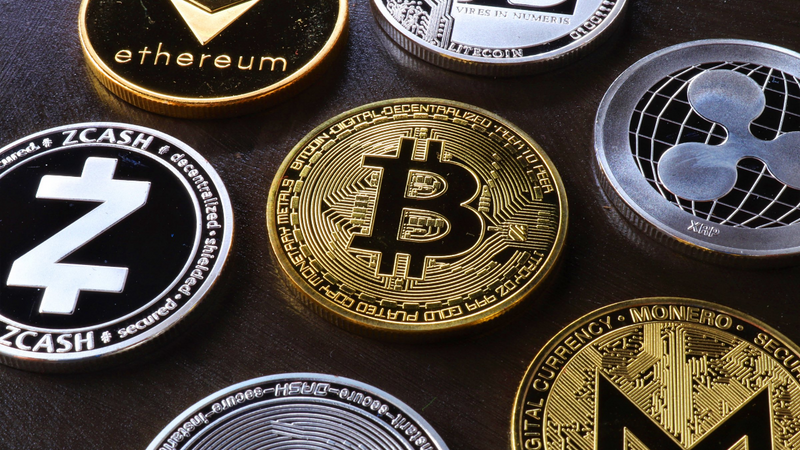Time to put my MBA + Tech background to use!
Crypto as a Financial Instrument
Many new to the crypto world often assume that a crypto token is a coin. Crypto tokens represent value, which can be traded and transferred on the blockchain. There are two types of crypto tokens: 1) utility tokens and 2) security tokens. Utility tokens provide access to future products or services from an organization. Security tokens are subject to securities regulations and must pass specific steps to be deemed legal.
Security tokens are essentially digital, liquid contracts for fractions of any asset that already has value, like real estate, a car, or corporate stock. Bitcoin is not a security token, but many NFT's likely are like LA-based artist Wolfram Sark.
To prevent this blog post from going down the inevitable rabbit hole of "how do you define a security token?", let's fast-forward and use some business history as a signal for how today's courts will likely decide.
Howey Test
A court ruling from 1946 led to a new product called the Howey Test. The Howey Test states that a transaction will be classified as security if all four of the following requirements are met:
☑️ There is an investment of money.
☑️ There is an expectation of profits.
☑️ The investment of money is in a common enterprise.
☑️ Any profit comes from the efforts of a promoter or third party.
The judge at the time, Justice Murphy, went further, stating that:
If that test is satisfied, it is immaterial whether the enterprise is speculative or nonspeculative or whether there is a sale of a property with or without intrinsic value.
In other words, if you are investing money and plan to profit from someone else's efforts, you are buying security.
Now, let's switch gears a bit and talk about crypto from a bottom-up, engineering point-of-view. In certain areas, it might also clarify the stuff we covered above.
Crypto as a Technology
From an engineering point of view, crypto infrastructure is built using various layers of agreement. Below is a brief description of each.
Layer-1 Networks
Layer-1 networks use a native token to access the network's resources. You use a token to pay for services like sending its cryptocurrency, minting a token, or calling a smart contract in plain English. The most popular Layer-1 networks today are Bitcoin (BTC) and Etherium (ETH) and a few emerging stars include Binance Smart Chain (BSC), Dfinity's Internet Computer (ICP), Solana (SOL), USD Coin (USDC), BAT, and FLOW (FLOW).
I will review each of the tokens above in future posts, but for now, each of these tokens solves very different use cases yet still function as Layer-1 tokens.
Layer-2 Networks
The most effortless way to talk about Layer-2 networks is by first describing the limitations of operating a Layer-1 network. The chart below is a comparative analysis between a few select Layer-1 networks.
Note: The way I calculated avg fee per transaction numbers in two steps. First, research gas analytics for each other and capture the average price. Step 2 was convert avg. Gas price to USD.
| Bitcoin | Etherium | ETH2 (Expected) | Solana | Binance Smart Chain |
Internet Computer |
FLOW Network |
Visa Interchange |
|
| Transactions Per Second | 4.6 | 15 | 100k | 65k | 246 | 11.5k | 100 - 1k | 1700 |
| Avg. Fee Per Transaction | NA | 146 gWei | NA | 0.000005 SOL | 6.785 gWei | 0.0001 ICP | 0.000001 FLOW | (See Below) |
| Avg. Fee Per Transaction in USD | $5 | $86 | NA | $0.0015 | $0.37 | $0.002383 | $0.00000753 | 1.29% + $0.05 to 2.54% + $0.10 |
| Transaction Latency | 10min | ~5min | 12sec (alt) | 0.4sec | 75sec | 2-5sec | NA | NA |
| Number of Validators | 12k | 11k+ | 200k+ | 1307 | 21 | 401 | 391 | NA |
| Total Transactions to Date | 708M | 1.07B | NA | 50B | 1.75B | 1.8M | 50M |
When Bitcoin first launched, it took years to gain developer adoption, and by 2015, one thing was clear, it would not be able to scale well. It could only support 4.6 transactions per second. For comparison, I added Visa's Interchange network so that you can see how far Bitcoin indeed was in achieving coin or cash-like characteristics. The second problem had to do with disagreement by the BTC mining community on how the protocol could/should be upgraded. The conclusion from all that debate was to fork Bitcoin and work on a better, faster network that could make digital tokens resemble more like cash. That's how Bitcoin Cash and the Lightning Network were born.
Synthesizing this all together, if Layer-1 focuses on creating a consensus ledger, then Layer-2 extends that functionality by enabling fast, cheap, high-throughput transactions over the underlying ledger. Today, Bitcoin's Lightning Network is the best example of a Layer-2 product but there's plenty of innovation happening right now. Anytime you hear topics like "scaling network performance" (aka rollups, side-chain, multi-signature), "reducing transaction fees", or "increasing programmability", the emphasis is on Layer-2 solutions.
I predict that once the Layer-1 goldrush starts to normalize in the next few years, we'll start seeing even more companies move up the stack to micro optimize BTC, ETH, ICP, etc. An excellent example of work currently in progress is the ETH2 upgrade that focuses on ETH rollups (counterpoint POV).
Layer-3 Blockchain for Dapps and Interoperability
Layer-3 blockchain is where we will expect to read headlines of teens becoming billionaires by developing decentralized applications (Dapps) that solve consumer frustrations. Although the future is hard to predict, one feature all Dapps will benefit from is employing cross-chain functionality. This means that people will use any token they prefer to pay for products, services, or experiences. The days of swapping Token A [ETH] for Token B [Wrapped ETH] to buy something online will get simplified. I'm hoping the user experience (UX) will seem analogous to how consumers can choose between Visa, Mastercard, Amex, or Discover to buy. I'd like to be able to buy goods using Bitcoin, USDC, USDT, ETH, Tezos, Tron, whatever.
So Much To Say
In conclusion, crypto is complicated and still so new. I don't think anyone knows for sure what the future holds, but it's worth paying close attention.
Stay tuned for more posts about crypto!




